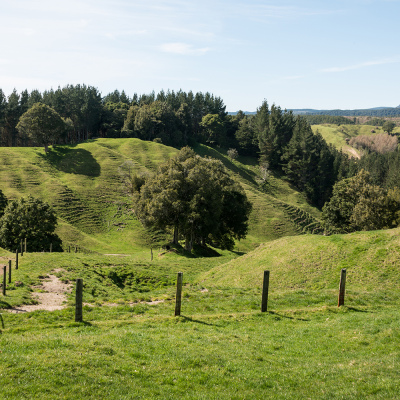
2 August 2017
In what has been described as a landmark decision for the future of Lake Rotorua, new rural land use rules will be notified on 15 August, 2017 after Bay of Plenty Regional Council today unanimously voted to accept a report and recommendations from the Independent Hearing Panel relating to Plan Change 10.
Plan Change 10 introduces rules for rural properties in the Lake Rotorua catchment, to limit the amount of nitrogen entering the lake from land use, in order to improve lake quality.
A panel of independent commissioners – all experts in their relevant fields of environmental policy and freshwater ecology – heard submissions from more than 50 individuals, groups and organisations over 15 days between March and May this year.
The independent hearing panel recommended some additional changes to Plan Change 10, particularly in five key areas – a simplified approach for small lifestyle blocks, enabling the potential development of Te Ture Whenua Māori land, a change in nitrogen allowance for non-benchmarked properties and in the 5ha lot threshold, and to clarify the reference file methodology.
The rules will now be notified on August 15, with submitters having 30 working days following the receipt of the notification of the decision, to lodge any appeal with the Environment Court.
RDD Committee Chair, Paula Thompson said the Council’s decision to accept the independent commissioners’ recommendations and formally notify the rules is a “landmark” decision for the council.
“This is not a decision that has been made lightly. Councillors have been required to maintain an open mind to the potential outcomes, and this decision has been made on the basis of the evidence and submissions heard and reported on by the independent panel, as required by the statutory process,” said Councillor Thompson.
Councillor Thompson said the independent commissioners’ report is extremely comprehensive and robust.
“The independent panel has been thorough in their considerations and assessment – they had a big job to do and they have done an important job for Lake Rotorua.
“Our environment won’t wait. We are all responsible for ensuring Lake Rotorua is in a healthier state to hand down to future generations, and today’s decision will help us all achieve that.”
In providing his support for Plan Change 10, BOPRC Okurei Councillor, Arapeta Tahana addressed the RDD committee and those in the public gallery in te reo Māori, followed by an English translation.
“I have made this decision with the knowledge and upbringing that I have as a Māori, and from being brought up by the lake. Interacting with water has always been part of my life and it is a place of fun, prayer and healing. I want it to continue to have this place for ourselves, and our future generations.”
Councillor Tahana said he accepted there were still challenges to overcome, but there was no doubt that adopting Plan Change 10 was the right thing to do for Lake Rotorua and future generations.
“Without any reservations, I absolutely support the recommendations – and accept them. I hope that we can all continue to work together, regardless of the challenges, to see this through.”
In accepting Plan Change 10, BOPRC Rotorua representative, Lyall Thurston, paid tribute to the rural community for the “dignity and professionalism” they demonstrated throughout the plan change process, as well as the efforts and contribution of previous BOPRC councillors.
“This is a process that has been underway for many years and in that time, I have observed a thorough scientific process, with considerable economic research, extensive consultation and public engagement.
“This is a critically important issue – not just for Rotorua, but for the whole of New Zealand – and Plan Change 10 will help us reduce nitrogen from entering Lake Rotorua, and achieve the environmental outcomes that we are seeking.”
Councillor Thompson said BOPRC is happy to meet with interested parties on Plan Change 10.
“Equally, we encourage land owners to talk to our land management team about what the Plan Change 10 developments mean for them.
“We are aware that some landowners and farmers are ready and want to move forward through this process, and we have waived the cost for resource consent applications until September 30. Our Advice and Support Service is also available to assist landowners developing a Nitrogen Management Plan if required. We are genuinely here to help landowners move forward.”
Note: Due to the fact that Councillor Kevin Winters and Councillor Norm Bruning both sit on the Lake Rotorua Incentives Committee, neither participated in the discussion and decision making process. The report was unanimously accepted by the remaining 12 members of the RDD committee.
The full report from the independent hearings panel is available here
ENDS
Background information
The rules are just one part of the solution to meet water quality standards set by the local community, with the level of nitrogen entering the lake needing to reduce by 320 tonnes by 2032. One hundred and forty (140) tonnes will come from Plan Change 10; 100 tonnes will come from voluntary land use change, 30 tonnes from voluntary gorse conversation, and 50 tonnes resulting from the implementation of engineering initiatives.
The Plan Change 10 rules have been in development for three years – a process which has included more than two years of public engagement and submissions.
The formal statutory process commenced with the adoption and public notification of the final version of Plan Change 10 in February 2016, with independent hearings held between March and May 2017.